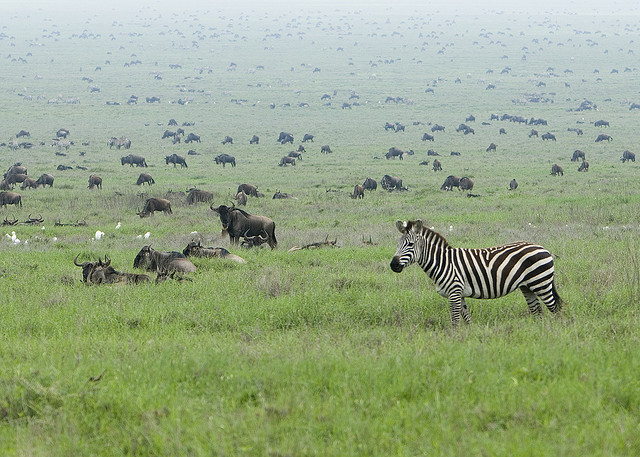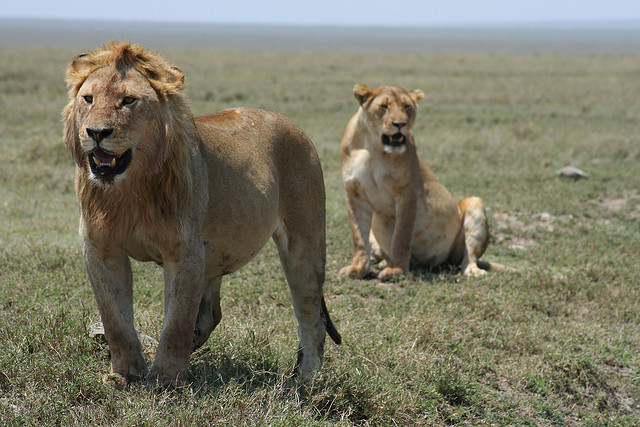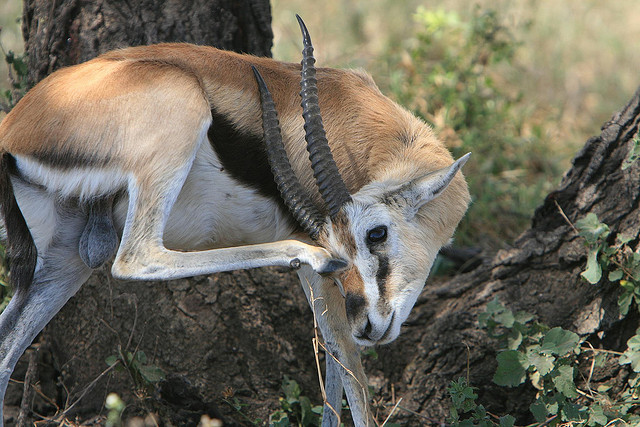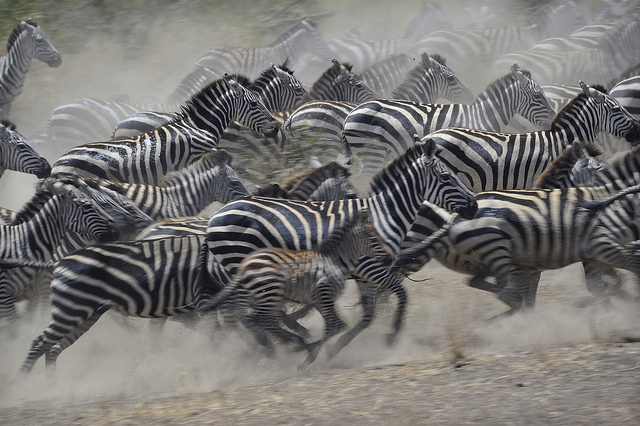Interestingly, a visit to Ngorongoro is appropriate at any time of the year because wildlife does not migrate entirely. This region experiences sufficient amount of rainfall that ensures wildlife has enough pasture to avoid migration.
In addition, since most animals are at the crater’s floor, it limits their ability to migrate unexpectedly. The only restrictions can be if the wet months make most parts inaccessible.

There are short and long rain seasons, and they take place from November to December and February to April respectively.
In March, the plains are full of activity as animals migrate across the savannah. The presence of carnivores like hyenas, lions, leopards and cheetahs adds life to the game drives because there are chances of seeing them hunt gazelles and other herbivores. During the dry season, wildlife congregates around watering holes. They do not move away from the rich grasslands where food is in plenty.
It means the Ngorongoro crater’s floor gets more wildlife because it is one f the few places that provides sufficient pasture. It is the most appropriate time to visit because the weather will not hinder game drives as would be the case when it rains. It also allows various activities like trekking and hot air ballooning.

Ngorongoro is about four hours from Arusha. This is the route that most people use though there are other options such as landing at Lake Manyara or at the airstrip on the crater’s edge, and traveling by road to Ngorongoro. It all depends with the comfort needed for the trip, the departure point as well as the budget constraints.
That aside, road transport to Ngorongoro takes about four hours. The ride goes through various villages along the way such as Mto wa Mbu. This town is popular for its Masai jewelry and clothing souvenirs that most tourist take back home. It also has a large agricultural market. It is an exceptional trip that navigates different geographical landscapes such as the Great Rift Valley, acres of cultivated lands to forested areas.

The most essential document for entry into this region, and to Tanzania in general, is a passport. Entrance fees to this conservation area cater for a day’s visit, and payments can be made at the entry points. Basically, this trip is suitable for individuals as well as groups.
There are different accommodation offers that may take into account the size of groups. The main accommodation venues include Ngorongoro Farmhouse lodge, Ngorongoro Serena lodge and Sopa Lodge.
How to Plan the Best Safari
Since Ngorongoro has a wide range of must see activities, it is wise to plan ahead.
Request for assistance from an expert. Since weather conditions are unpredictable and they change every year, dealing with an expert who has updated information about the situation on the ground ensures the trip is a success. The worst that could happen is landing in the region to find unexpected weather conditions.

Make accommodation reservations in advance. Availability changes with the season. During the peak season that may be around July because of the wildebeest migration, lodges and campsites may have no room.
Avoid driving to the area alone during the rainy season because the roads may be inaccessible. Remember, it’s the African wild and getting stuck in the mud when finding your way into the conservation area makes you vulnerable.
Find out what you need to carry to make your trip successful. For instance, carry your binoculars for viewing wildlife and a camera to capture the scenery and animals that you view at close range. When driving to the Crater’s floor, you can photograph the Maasai community that poses for photos and charges a small fee